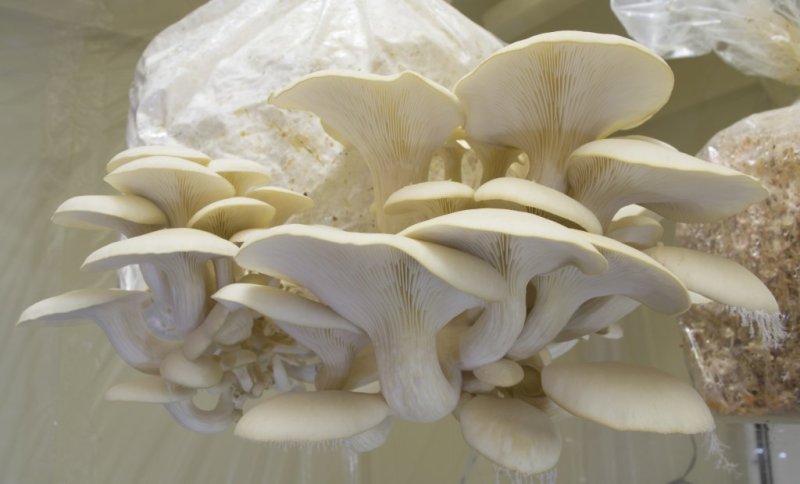Lots of people have developed their own systems for automating the growth of plants. Keeping the environment under tight control leads to better yield, and computers are better than humans at remembering to water the plants regularly. [Kyle] is into growing mushrooms (the legal, edible type) and automating things. This led to his system for automated mushroom cultivation.
We’ve seen an automated system for growing fungi before, but [Kyle]’s project is a bit bigger. He’s built a sealed room for growing mushrooms. The room is sealed with a plastic sheet, using magnetic strips to create a doorway. Within the room, a heater, humidifier, and circulation fan control the environment. Temperature, humidity, and dew point in the chamber are constantly monitored and adjusted as necessary.
The entire system is controlled with a Raspberry Pi and custom software, which is available on Github. GNUPlot is used to generate graphs, which are accessible through a web server. The web interface also allows the parameters of the chamber to be tweaked remotely. Based on the settings, the Raspberry Pi controls a set of relays to keep the chamber in an ideal state.
















There’s a typo in the link, should be: http://kylegabriel.com/2015/02/05/automated-mushroom-cultivation.html
Badger badger badger badger badger badger badger badger badger badger badger badger
MUSHROOM MUSHROOM!!! It’s a snaaaake it’s a snaaaaake ooooh it’s a snake.
you are very welcome.
Mmmmmmm… Mushrooms.
https://www.youtube.com/watch?v=h-BOWOxPrAs
Ok, not really a complaint but a small tip to future posters: If a project has an arduino or a raspberry pi, that’s most probably the last part you need to mention, we all know how to use these. I would be more interested in the kind of sensors used and the humidifier driving setup.
Speak for yourself. Not everyone here has the expansive knowledge of microcontrollers that you do. Some of us are novices, and others have only just started learning about them. There’s nothing wrong with the author including details about how the project is set up. Maybe you won’t learn much from it, but someone else might.
Totally. Researching sensors and actuators is hard; knowing someone has successfully used something is really valuable. Which microcontroller is basically immaterial.
Well said. I designed mushroom incubators for years, and the sensors are extremely important. Most chinesium specials aren’t accurate near 100% rh, and even fewer can survive a warm moist environment for more than a week or 2. The controller relatively speaking isn’t that big of a deal
Some illegal mushrooms are also edible :)
For some mushrooms it also depends on the country if they are illegal…
All mushrooms are edible. Some of them more than once :)
:D
lol
Growing the magic kind, this setup won’t trip the DEA’s monitoring of power usage. What power?
No more than a bathroom.
Genesis 1:11 + 1:29
Isaiah 18:4-5
Judges 1:19
Self Delusion – Chapter 8 – Psychology Basics
Some people use low dosage psylocibes to treat cluster headaches and seizures from head injury. For many this is an affordable and effective option, the initial investment might be as low as $40 to grow years worth of medicine while the big corporations’ anti-seizure medications and prescription tryptamines like sumatriptan could cost $800 or more each MONTH for those lucky enough to have insurance or wealth. Furthermore the side effects are often less. The dosage is sub-hallucinogenic and less intoxicating than cough medicine. BTW, Dextromethorphin Hydrobromide (cough medicine) is hallucinogenic and sometimes used recreationally. Cluster headaches are among the most painful of conditions.
Impressive setup, but lackluster results. Those oysters are starving for fresh air… They should be lush and meaty, but they instead have elongated stipes and puny caps. I give the author a C+ for cultivation skills.
Indeed, the last photo shows oysters that were very starved for air! They were from a harvest taken out of a sealed autoclave bag after being in it for 5 months. I had assumed there wasn’t going to be any more growth after the 3rd flush and bagged it and set it aside.
Now those other white oysters… so meaty and tasty.
Furthermore, the photos are deceptive in that the only reference for scale is my thumb in the last photo. These mushrooms were much smaller than the rest (for the reason outlined above) and are not indicative of the average flush size. The previous few photos of white oysters yielded a few pounds.
Hey man, not everyone can be Paul Stamets